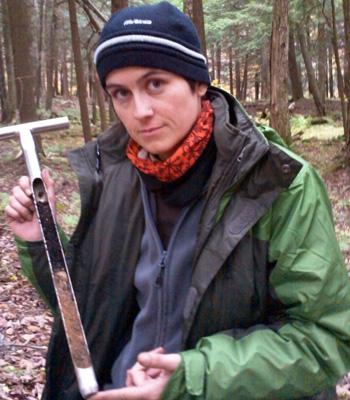Assessing the Role of Tree Species and Nitrogen Deposition in Stabilizing Carbon in Northern Hardwood Forest Soils

Forests play an important role in sequestering atmospheric carbon dioxide. Understanding how atmospheric nitrogen deposition affects carbon stabilization and storage in forest soils is important as humans continue to alter global carbon and nitrogen cycles. While recent studies have reported that increased nitrogen inputs tend to increase carbon stabilization in temperate forest soils, other studies have shown no effect. Some of this variation may be due to differences among tree species.
NSRC researchers evaluated response of soil carbon to nitrogen additions across forest plots containing different dominant tree species: sugar maple, American beech, yellow birch, eastern hemlock, and northern red oak. In a 14-year nitrogen-addition experiment in the Catskill Mountains, they measured soil carbon lability (susceptibility of organic matter to decomposition) using laboratory incubations and density fractionation. Only the incubation method showed significant interactive effects between nitrogen fertilization and tree species. Soils from beech stands showed the greatest nitrogen effect and a 23% decrease in carbon lability. Decreases in soil decomposition and respiration rates in organic and mineral soil horizons in response to nitrogen addition across all five species suggest a significant suppression of carbon mineralization with strongest responses in beech and oak stands.
Increased nitrogen additions significantly reduce soil organic matter decomposition rates and the lability of soil carbon for some tree species. Scientists need to consider varying responses among tree species when predicting future consequences of nitrogen inputs on soil carbon storage. In the Northern Forest, years of excess nitrogen deposition from air pollution have probably led to increased soil carbon storage, particularly in beech and oak stands.
